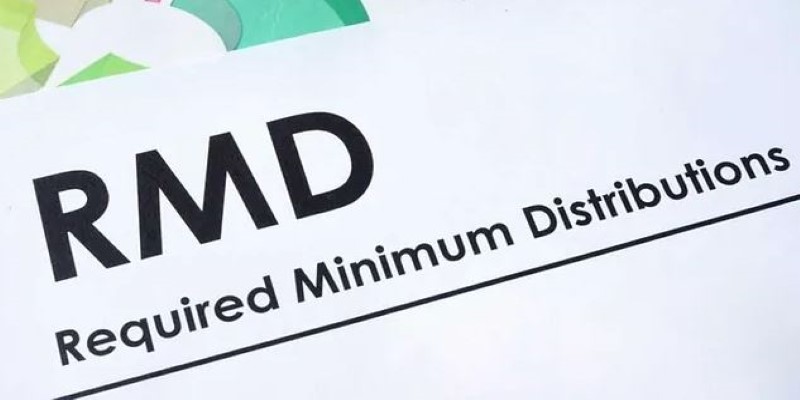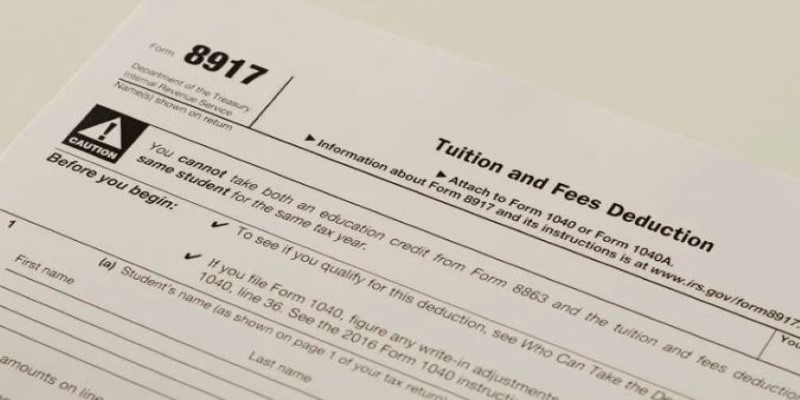Lower Your Taxes and AGI with RMD Charitable Donations
Dec 11, 2024 By Elva Flynn
The required minimum distribution (RMD) rule is something most retirees have to deal with when they turn 73. If you're nearing retirement or already there, you may be wondering what to do with that annual RMD amount. You can take it as income, but that also means you'll have to pay taxes on it.

But here's the silver lining: you could reduce your taxable income by giving some of that money to charity. If you are charitably minded, contributing your RMD to a qualified charity may serve as an effective tax strategy in reducing not only taxes but also your AGI. In this article, well explore how gifting your RMD to charity works, the benefits it offers, and how you can use this approach to reduce your tax liability and AGI.
Understanding RMDs
First, just let's quickly catch our breath before taking the charitable donation process and see what RMDs are all about and who needs to take those. An RMD is the minimum amount you need to withdraw from your retirement accounts, including the traditional IRAs, 401(k)s, and other tax-deferred accounts, every year once you hit age 73. The IRS mandates that these funds be distributed to you in order to ensure that you start paying on your retirement savings.
The amount of RMD that you must withdraw varies depending on a number of factors, such as your account balance and life expectancy. You will be pleased to learn that once you reach the specific age requirement for RMDs, there's no mandate to spend the money; you can use it in any way you want. Now comes the charitable donation channel.
The Power of Charitable Donations with RMDs
Making a QCD of an RMD to charity is the most effective tax strategy that also shows financial and philanthropic benefits. The IRS allows people who are 70 years of age or older to transfer their IRA directly to any qualified charity in the amount of up to $100,000. That amount will not be included in taxable income. This means that whatever is contributed does not add to your taxable income or your Adjusted Gross Income (AGI), thus reducing your overall tax liability.

By using a QCD, you satisfy your RMD requirement while also reducing your taxable income, which can help lower your taxes for the year. Since the IRS doesnt tax the donation amount, you avoid paying federal income tax on the portion of your RMD that you give to charity. For example, if your RMD is $10,000 and you donate it through a QCD, you wont be taxed on that $10,000.
In addition to the tax savings, this strategy allows you to support a cause thats meaningful to you, making it a win-win scenario. A QCD is a powerful tool for retirees looking to reduce their tax bill while giving back to the community or charitable organizations they care about.
How Donating Your RMD to Charity Can Lower Your Taxes and AGI
Donating your RMD to charity through a Qualified Charitable Distribution (QCD) offers significant tax benefits. When you direct your RMD to a qualifying charity, the amount donated is excluded from your taxable income. For example, if your required minimum distribution (RMD) is $10,000, and you donate that full amount to charity, you dont have to pay taxes on the $10,000. This directly reduces your taxable income, lowering your overall tax bill for the year.
In addition to lowering your taxable income, donating your RMD also reduces your Adjusted Gross Income (AGI), which is a critical figure used to determine eligibility for various tax credits, deductions, and benefits. A lower AGI can unlock additional tax advantages. For instance, it could make you eligible for more favorable taxation of your Social Security benefits. When your AGI is reduced, you may also qualify for other deductions, such as medical expenses, that become more valuable as your AGI drops. Medical expenses, for example, are only deductible to the extent that they exceed 7.5% of your AGI.
In essence, by donating your RMD to charity, you not only support the causes you care about but also create a significant tax benefit that can lower your overall tax burden and increase your eligibility for various tax breaks. This strategy provides a smart way to maximize your retirement savings while reducing your taxes.
The Mechanics of Donating Your RMD to Charity
There are a few things you need to understand to make a tax-efficient donation of your RMD. First, the charity youre donating to must be a qualified 501(c)(3) organization. The IRS maintains a list of eligible charities, and they must meet certain criteria to receive QCDs. You cannot donate to a donor-advised fund or a private foundation using this strategy.

Secondly, your donation must be made directly from your IRA to the charity. If you take the RMD yourself and then give it to charity, it will not qualify as a QCD, and you will be taxed on the distribution. Therefore, its important to have the donation processed as a direct transfer. Most IRA custodians can help you set this up and ensure the distribution goes directly to the charity.
Once your donation is processed, the charity should send you an acknowledgment letter, which you can keep for your tax records. This letter should include the amount of the donation and confirm that no goods or services were exchanged as part of the gift.
Conclusion
Donating your RMD to charity is a simple and effective way to reduce both your taxes and AGI while supporting meaningful causes. By transferring your RMD directly from your IRA to a qualified charity, you avoid paying taxes on that distribution and lower your taxable income. This strategy is particularly beneficial for those who wish to give back without increasing their tax liability. It's important to work with a financial advisor to ensure compliance with tax rules. With proper planning, using your RMD for charitable donations can provide significant tax savings while benefiting the causes you care about.








